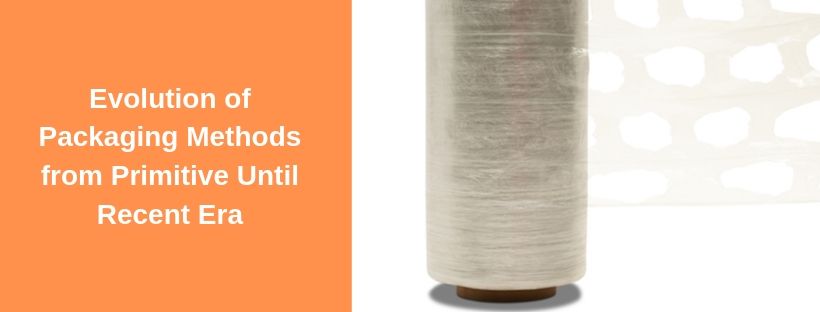Packaging is a trend that doesn't go unnoticed irrespective of which industry a product belongs to. Modern day packaging serves several functions that go beyond protecting, containing, and preserving products. Modernization in packaging requires it to communicate, promote and transact with the products and in some ways also perform the function of affecting people's perception about the product while influencing their behavior.

While these functions are considered normal today, the scene was completely different 150 years ago. Product packaging has undergone careful engineering and multiple functions of commerce to shrink into a thin film that can be wrapped around products and efficiently secure them. Continuous technological innovations and increasing competition has shaped packaging supplies as we know them today.
For example, in ancient times, there was no need for packaging for food as it was produced and consumed locally. However, with the growth of civilization, the need for containing, protecting and transporting food supplies arose. People started using bamboo, tree leaves, palm leaves, coconut shells and animal skin. Later, when minerals and chemicals were discovered, new packing materials in the form of fabrics, ceramics, paper, metals were developed. Industrial revolution further demanded for better packaging materials and after WWI, several types were seen that included cardboard boxes, molded glass, cellophane, and metal cans. The Great Depression witnessed the emergence of supermarket culture which drastically changed the distribution and consumption patterns. Post WWII, consumers enjoyed the convenience of use-and-throw materials that led to the discovery of plastics and aluminum foil.
Then came the digital age and in the latter half of 20th century, businesses took a global leap and gradually packaging became a distinct factor in differentiating products on the shelf. Going further, with the rise of the Internet, product packaging is seen more as an ESP (emotional selling point).
First came glass followed by metals and paper. Gradually, packaging came with meaning and conveyed buyers about specific brands. This further evolved by innovating shapes of the packaging materials as an identity (for ex. Coca-Cola bottles). Then came self-speaking packages that displayed the product within by using a transparent side, mostly used in supermarkets where there are no salesmen. Various types of plastics then captured the market with easy usability and economical benefits. Bar codes were discovered which took less space on the package and contained much more information.
Packaging companies have been experiencing constant demand as consumers always expect something new. PackagingSuppliesByMail.com has proven its excellence in the packaging industry, and shelves products that are affordable as well as quality approved for the highest performance.



